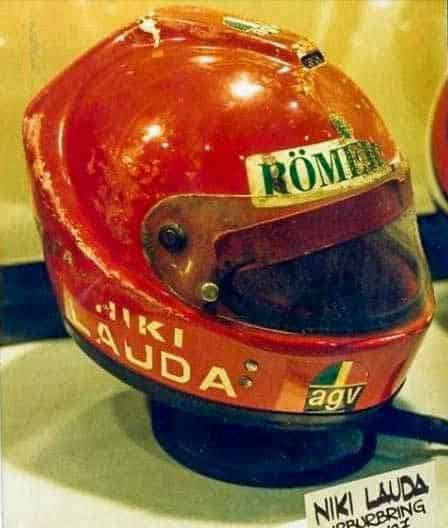Your helmet is a pretty important gear when it comes to riding a motorcycle, so you probably want to know how long do motorcycle helmets last.
A motorcycle helmet lasts about five years, though its lifespan can vary depending on materials, exposure to sun and sweat, and maintenance. Generally, manufacturers and the Snell Memorial Foundation recommend replacing helmets within five years of purchase and first use, or seven years from the manufacturing date, whichever comes first. Most importantly, replace the helmet sooner if you notice any signs of damage.
While a quality helmet might come with a substantial price tag, it’s an investment that could potentially save your life or prevent serious head injuries.
| Helmet Model | Category | Safety Certification | Check & Shop Now |
|---|---|---|---|
| AGV K3 | Best Overall | DOT, ECE, SHARP | RevZilla | MotoSport | Amazon |
| Shoei X-15 | Best Road Racing | DOT, ECE, SNELL, SHARP, FIM | RevZilla | CycleGear | J&P Cycles |
| Arai XD-4 | Best Adventure | DOT, ECE, SNELL, SHARP, FIM | RevZilla | CycleGear | Amazon |
| Scorpion EXO-R420 | Best Urban Commuter | DOT, ECE, SNELL | RevZilla | CycleGear | Amazon |
| Bell MX-9 Adventure Mips | Best Dual-Sport | DOT, ECE | RevZilla | MotoSport | Amazon |
| Sedici Strada II | Best Sport/Tour/City | DOT, ECE, SNELL | RevZilla | CycleGear | J&P Cycles |
| HJC i90 | Best Budget Friendly | DOT, ECE, SHARP | RevZilla | MotoSport | Amazon |
How Long Do Motorcycle Helmets Last? The Five-Year Rule

Once you start researching, you’re likely to encounter the five-year rule, which, as the name suggests, recommends replacing your helmet every five years. This rule regarding the lifespan of motorcycle helmets is a consensus between the Snell Foundation and helmet manufacturers.
Helmets are susceptible to deterioration because the linear materials in the helmet degrade over time. This degradation is influenced by various factors, including the glues, resins, and other materials used in the helmet, as well as body oils, hair products, and environmental conditions.
What Influences the Five-Year Rule?
The five-year rule is a helpful guideline, but it’s not set in stone. The longevity of a helmet depends on three main factors:
- Amount of Use: Consider the number of hours or miles the helmet has been worn.
- Maintenance: Proper care, including storing the helmet correctly when not in use and keeping it clean, significantly extends its lifespan.
- Initial Quality: The materials and workmanship of the helmet are crucial factors in determining its durability. Carbon fiber, fiberglass, Kevlar, and polycarbonates have varying lifespans.
The five-year rule isn’t the definitive answer regarding a helmet’s lifespan. Whether your helmet is old or new, it’s essential to regularly check it to ensure its integrity remains intact.
Do Motorcycle Helmets Expire?
Motorcycle helmets do expire, which is why manufacturers generally recommend replacing them after a certain period, even if the helmet appears to be in good condition.
You can check the manufacturer’s guidelines for when to replace your specific helmet. If you can’t find a specific expiration date, it’s best to go by the five-year rule to stay on the safe side.
Do Motorcycle Helmets Expire When Not in Use?
Motorcycle helmets might expire even when not in use. Any helmets will degrade over time due to various factors; however, the rate of degradation for unused helmets is usually slower compared to regularly used helmets, especially if the unused helmet has been stored properly (in a cool, dry place, away from direct sunlight.)
If you’re not sure about the condition of your helmet that has been stored, you can contact the manufacturer for guidance. It’s best to go ahead and replace it, especially if it’s been over 5 years since its manufacture date.
How to Tell If Your Helmet Is Still Fit for Use?
To determine if your motorcycle helmet is still fit for use, you should do regular helmet checks and inspect for any signs of wear, damage, or degradation.
Helmet Checks
A regular helmet check is essential to ensure your helmet remains fit for its purpose. There are several things you should consider when conducting a helmet check, including:
- Ensure the EPS liner is firmly attached to the outer shell.
- Check that the retention straps are attached and not fraying or worn.
- Make sure the clip system is easily secured.
- Inspect the outer shell for chips and cracks. While chips can often be repaired, a crack usually indicates it’s time for a new helmet.
- Ensure that the moving parts on the helmet are moving freely.
- Check that the clip system is functioning as it should be.
After An Accident

Irrespective of whether your helmet appears damaged if you are involved in an accident and hit your head, it’s best practice to replace your helmet. This is because the foam in the helmet gets compressed and won’t return to its original shape.
Continuing to use the helmet after an accident can render the foam ineffective in absorbing future impacts.
While the five-year rule serves as a good general guideline for determining the lifespan of a motorcycle helmet, the significance of regular checks for deterioration cannot be underestimated. Not all helmets are created equally, making these checks essential for ensuring your helmet’s continued effectiveness.

I've diligently categorized my motorcycle gear recommendations into all available categories, with the aim of providing you with a comprehensive analysis that showcases the absolute best options for all your needs. These items are the culmination of in-depth research, extensive testing, and personal use throughout my vast experience of 50+ years in the world of motorcycling. Besides being a passionate rider, I've held leadership positions and offered consultancy services to reputable companies in over 25 countries. To See Top Picks and the Best Prices & Places to Buy: Click Here! |
Q: How Long Do Motorcycle Helmets Last?
Motorcycle helmets last at least five years, although their lifespan can vary based on factors such as materials, sun and sweat exposure, and maintenance. Regular wear and environmental factors can gradually reduce a helmet’s protective capabilities.
To ensure optimal safety, replace your helmet as recommended—either five years from the date of purchase and first use, or seven years from the manufacturing date, whichever comes first. Replace it sooner if you notice any signs of damage.
Information for this article was partially sourced and researched from the following authoritative government, educational, and non-profit organizations:
MS/L













